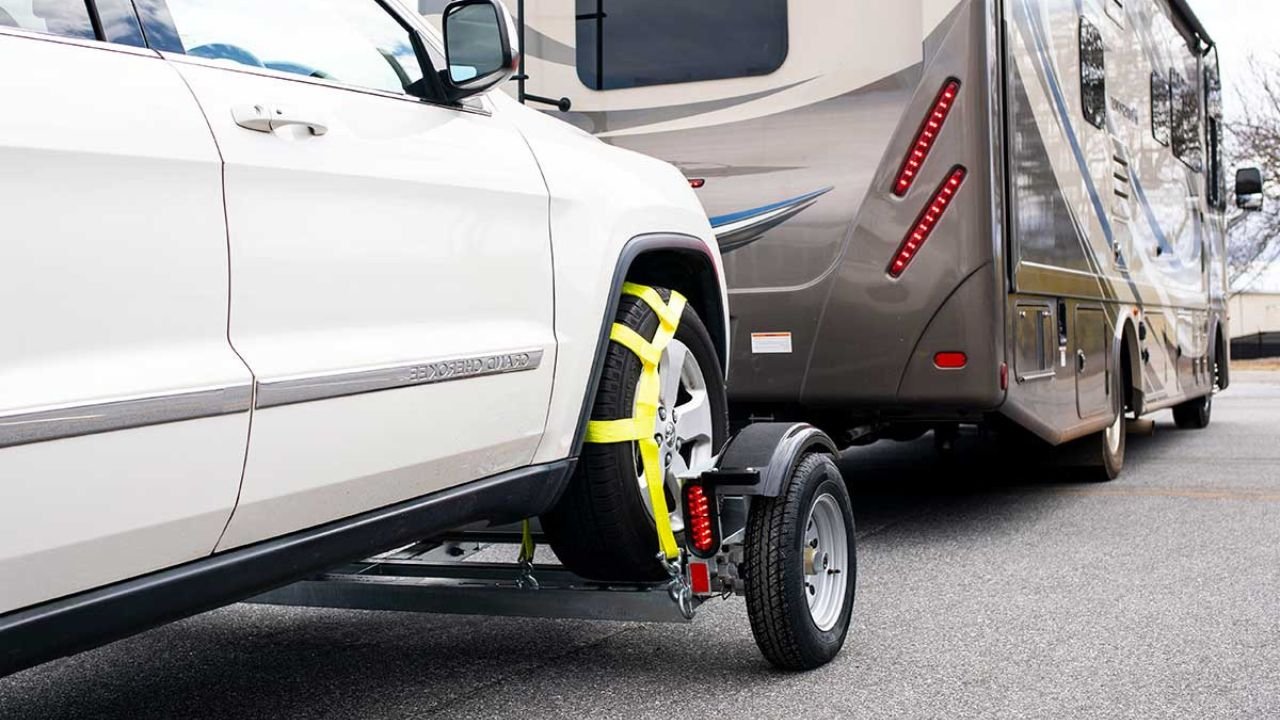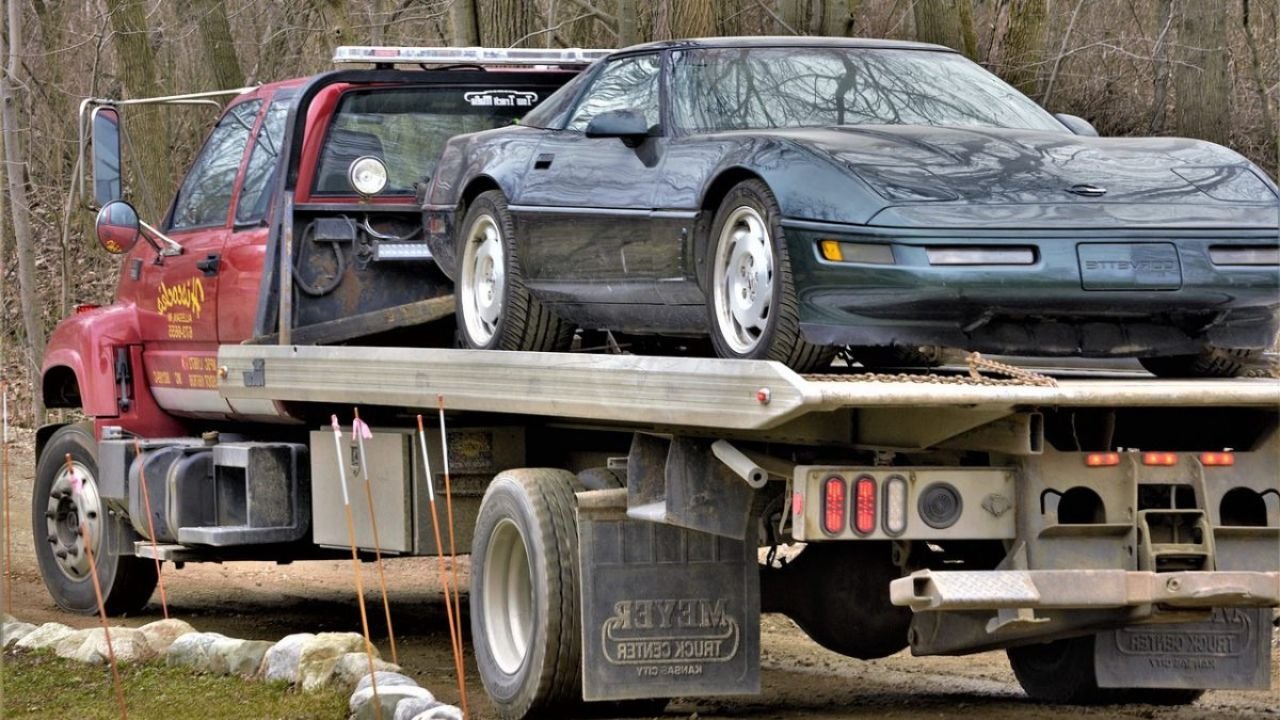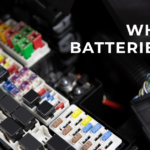Towing a vehicle, whether it’s due to a breakdown, a move, or any other reason, often prompts a crucial decision: Do you opt for a car towing dolly or a flatbed?
Both methods have their own set of advantages and disadvantages, and understanding these can make a world of difference in ensuring a safe and efficient towing experience.
Car Towing Dolly

Imagine you’re planning a cross-country road trip and decide to bring along your trusty sedan. Just as you hit the road, your car decides to throw a temper tantrum – the engine sputters, and you’re left stranded on the side of the highway. Desperate to get back on track, you consider using a car towing dolly.
Pros:
Cost-Effective: Towing a vehicle with a dolly is often more budget-friendly compared to a flatbed. Dolly rentals tend to be cheaper, which can be a relief if your wallet is already strained from unexpected repairs.
Lightweight and Maneuverable: Car towing dollies are relatively lightweight and compact. This makes them easy to maneuver, especially in tight spaces. If you find yourself navigating through narrow city streets or cramped parking lots, a dolly might be the better option.
Minimal Wear and Tear: When using a car dolly, only the front two wheels of your vehicle touch the ground. This reduces wear and tear on your car’s transmission and tires compared to flatbed towing, where all four wheels are in contact with the road.
Cons:
Limited Applicability: Car dollies are typically designed for front-wheel-drive or rear-wheel-drive vehicles. All-wheel-drive vehicles might require additional precautions and modifications to avoid damage during towing.
Learning Curve: Operating a car dolly might not be as straightforward as it seems, especially if you’re not accustomed to towing. Properly securing the vehicle on the dolly and maintaining balance requires some know-how.
Two-Wheel Towing: Since only two wheels of the vehicle are off the ground, there’s a potential for increased stress on those wheels and the suspension components. Additionally, the non-towed wheels can accumulate mileage during towing.
Flatbed Recovery

Now, let’s switch gears and consider a different scenario. You’re helping a friend move to a new house, and they have a large SUV that needs to be transported to the new location. This time, the flatbed towing option comes into play.
Pros:
Versatility and Security: Flatbed towing offers unparalleled versatility. It can accommodate vehicles of varying sizes, shapes, and drivetrains – from small cars to heavy-duty trucks. Moreover, the entire vehicle is lifted onto the flatbed, ensuring all wheels are off the ground and well-secured.
Reduced Risk of Damage: With all wheels lifted off the ground, flatbed towing minimizes the risk of wear and tear on the towed vehicle. This method is often considered safer for exotic cars, vintage vehicles, or cars with sensitive drivetrain systems.
Ease of Use: For those not well-versed in towing techniques, flatbed towing might be a simpler option. There’s no need to worry about compatibility with drivetrain types, and securing the vehicle on the flatbed is a more straightforward process.
Cons:
Cost Consideration: While flatbed towing offers numerous benefits, it comes at a higher cost. The equipment and expertise required for flatbed towing can make it a more expensive option compared to using a car dolly.
Space and Accessibility: Flatbed tow trucks are larger and less maneuverable than their dolly counterparts. This can become a challenge when towing in tight urban spaces or congested areas.
Weight and Fuel Efficiency: The weight of the flatbed tow truck and the towed vehicle combined can have an impact on fuel efficiency. This is an important factor to consider, especially for longer distances.
Also Read: What Not to Do When Your Car Breaks Down
The Final Verdict: Which to Choose?
As you stand at this crossroads, a decision must be made. Will you opt for the cost-effective simplicity of a car-towing dolly, or will you embrace the versatility and security of a flatbed? The answer hinges on the specific circumstances you find yourself in.
If you’re towing a small front-wheel-drive car short distances and are comfortable with the ins and outs of dollies, that might be your best bet. On the other hand, if you’re dealing with a luxury vehicle, an all-wheel-drive SUV, or simply prioritize peace of mind, the extra investment in a flatbed could pay off in the long run.
Consider factors like the condition of the towed vehicle, the distance you need to cover, and your familiarity with towing methods. Sometimes, the best decision isn’t a one-size-fits-all solution but rather a tailored choice that aligns with your unique needs.
In the grand scheme of things, whether you’re cruising down the open road with a car on a dolly in tow or watching your vehicle gracefully perched on a flatbed, the journey itself is a testament to the choices we make – choices that keep us moving forward, even when our vehicles decide to hit the brakes.





